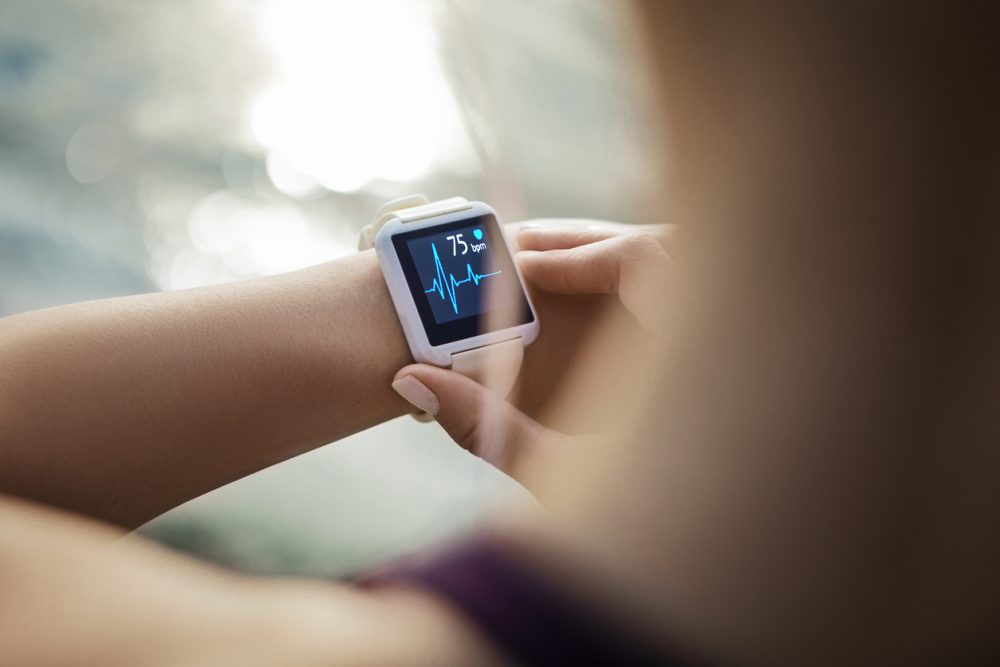As the smartwatch market matures, IDTechEx said, capabilities of alternative wearables will continue to expand. In the coming years, alternative form factors could begin tempting consumers away.
The adoption of Apple AirPods has grown ten-fold in the last five years, IDTechEx said, with Bluetooth technology bringing true wireless stereo to the mass market. Like their smartwatch companions, the price point for these hearables remains high, and consumers may begin turning to cheaper options without innovation. However, earphones have a fundamental advantage that wrist-wear does not – they are near the brain, the company added.
According to IDTechEx, the proximity of the ear to the brain could give more advanced earphones a commercial advantage in the coming years. Metal electrodes used to measure electric signals from the heart (ECG) can also measure neural activity (EEG).
Measurements of signals from the brain can quantify stress, sleep quality, and emotional state, as well as diagnose epilepsy. It is already possible to buy EEG-integrated headbands, but these are far less fashionable and mostly sold as a novelty toy, the research found. The challenge to date for an in-ear solution has been the miniaturization of electronics and noise cancellation. Yet in recent years, some companies, such as Naox Technologies and Kokoon, have demonstrated that EEG-integrated hearables are feasible.
So far, big brands have refrained from adding new sensor technology into their hearables. It has long been possible to put optical heart-rate sensors into earphones, and while specific devices for sports are available, it has not found its way into the mass market. This is likely because the priority has been on enhancing audio quality, according to the IDTechEx analysis. It is also because it provides a repeat data set available from the watch. Moreover, earphones cannot offer real-time data visualization, the company added.
However, given their unique capability to interpret neural signals, now could be the time for hearables to play a more advanced role in the user-data collection via EEG, IDTechEx commented.
Indeed, implantable electrodes are already being used to communicate with exoskeletons to enable paraplegics to walk. So, while 2023 could be a little early to see mass adoption of mind-reading earphones, it could well be the time to see a shift in focus from advancements in big brand wrist-wear switch to hearables. Consumers left unimpressed by incremental improvements to smartwatch hardware may limit their spending on new consumer electronics to a pair of more impressive earphones.
Removable Pods and Performance Analytics: A More Personalized Approach to Wearable Adoption
Smartwatches and fitness tracker bands currently dominate the activity monitoring market, but demand for a more personalized approach could be on the horizon, the report found. Much of the value obtained from our wearables is from the software analysing our movements. However, the raw motion data available from a watch alone has limits, and the data analytics available from platforms created for athletes also has advantages for the mass market.
Headsets and Eyewear: Preparing for the Meta-verse
What lies beyond the smartwatch will largely be dictated by the future of our interaction with one another and the internet, IDTechEx continued. Today, it is standard to use a laptop, smartphone, and possibly also a smartwatch for activity tracking and hands-free communication if desired. But this ecosystem has been the status quo for many years now and could be set for disruption.
The design of phones has stagnated in recent years and combined with ‘zoom fatigue’ following the pandemic, there are signs consumers are hungry for something more immersive.
Here enters the concept of the ‘meta-verse’. The development of augmented reality headsets and smart glasses could one day make the smartphone redundant, taking smartwatches with it. Wearable biometrics will likely follow if society switches to headgear for messaging, web browsing, and gaming.
AR/VR (augmented/virtual reality) headsets already need motion sensors and cameras for eye-tracking. Therefore, it is not hard to imagine the integration of dry electrodes across the forehead, collecting both heart rate data and measuring neural signals.
This kind of revolution is most likely to paint a picture of the world beyond the smartwatch. However, the success of this shift will be driven by advancements in display optics, which are still at least a few years away from reaching mass-market-ready levels of miniaturization. In the meantime, headgear and smart glasses need to become more socially accepted. As such, interim products (such as camera-integrated Ray Bans) will likely continue to be released to make them more fashionable. Similarly, gaming headsets are already seen in a growing number of TV advertisements. While they may look unsettling to some now, this time next year, society will likely be far more comfortable with them.
Conclusions
According to IDTechEx, the ultimate hurdle facing earphones, removable pods, and headsets is balancing data access with visualization and social acceptance.
Monitoring activity in real-time is a major advantage of wearables; seeing it live on a watch is a huge selling point. This feature will likely see consumer adoption of new wearables depending on connectivity to existing smartwatches. As for social acceptance, integration into hardware that is owned by the right brand will be crucial. The marketing challenge facing manufacturers looking to appeal to a wider demographic of consumers, elite athletes, and the medical market is non-trivial but is equally outside the expertise of today’s consumer electronics kingmakers.
The smartwatch is likely to follow the trajectory of the smartphone in becoming less impressive but continually in demand. The real opportunity is within the next generation of wearables, smartwatches will interface to satisfy the demand for new functionality. This market has much more room for new players, materials, and innovation.















